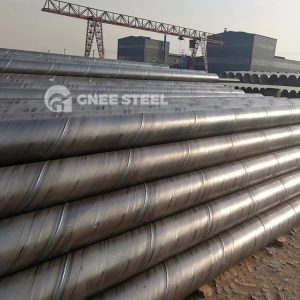(1) Preparation before construction
① Although the melting point of molten lead is 327°C, due to the open-air operation, there is a certain distance between the molten lead and the pouring interface. Considering that the temperature of the molten lead drops during transportation and pouring, the temperature of the molten lead must reach above 400°C. can be used. A simple way to check the lead temperature is to insert a dry iron rod into the molten lead. If the liquid lead does not stick to the iron rod when taken out and the surface of the molten cyan lead turns golden yellow, the molten lead temperature has reached above 400°C.
② Check the mating parts of the socket and socket for impurities and oil stains, and clean them. If a rubber ring is used, the rubber ring selected according to the size of the gap should be placed in the socket.

(2) Fill in the first oil rope or rubber ring
① Fill in the oil rope. Insert the pillow chisel into the gap on the lower side of the joint, and hammer the pillow chisel to lift up the socket part. Tighten the oil rope and fill the gap. First, fill the bottom oil rope fully and solidly at one time, then gradually hammer it from bottom to top, and then go around the second circle and fill it with the same method. The surrounding area should be as smooth as possible, and the depth should be about 50 to 60 mm from the end face of the socket. The length of the overlap at the head and tail ends of the oil rope is 5 to 7 cm. The oil rope at both ends of the overlap should be appropriately thinned, and its position should be placed on the upper side of the interface.